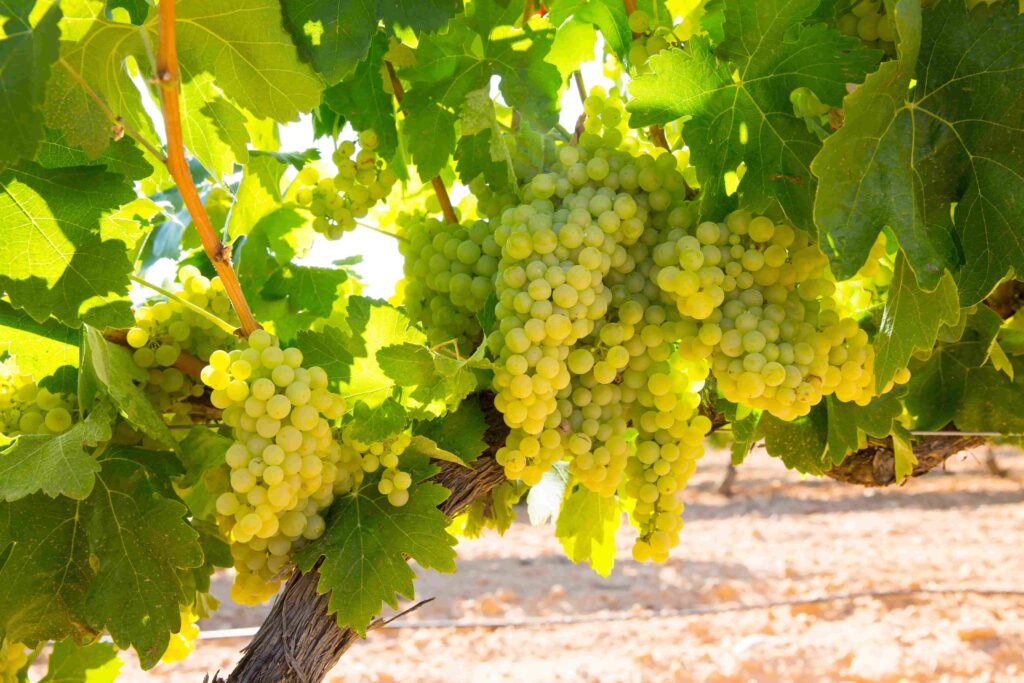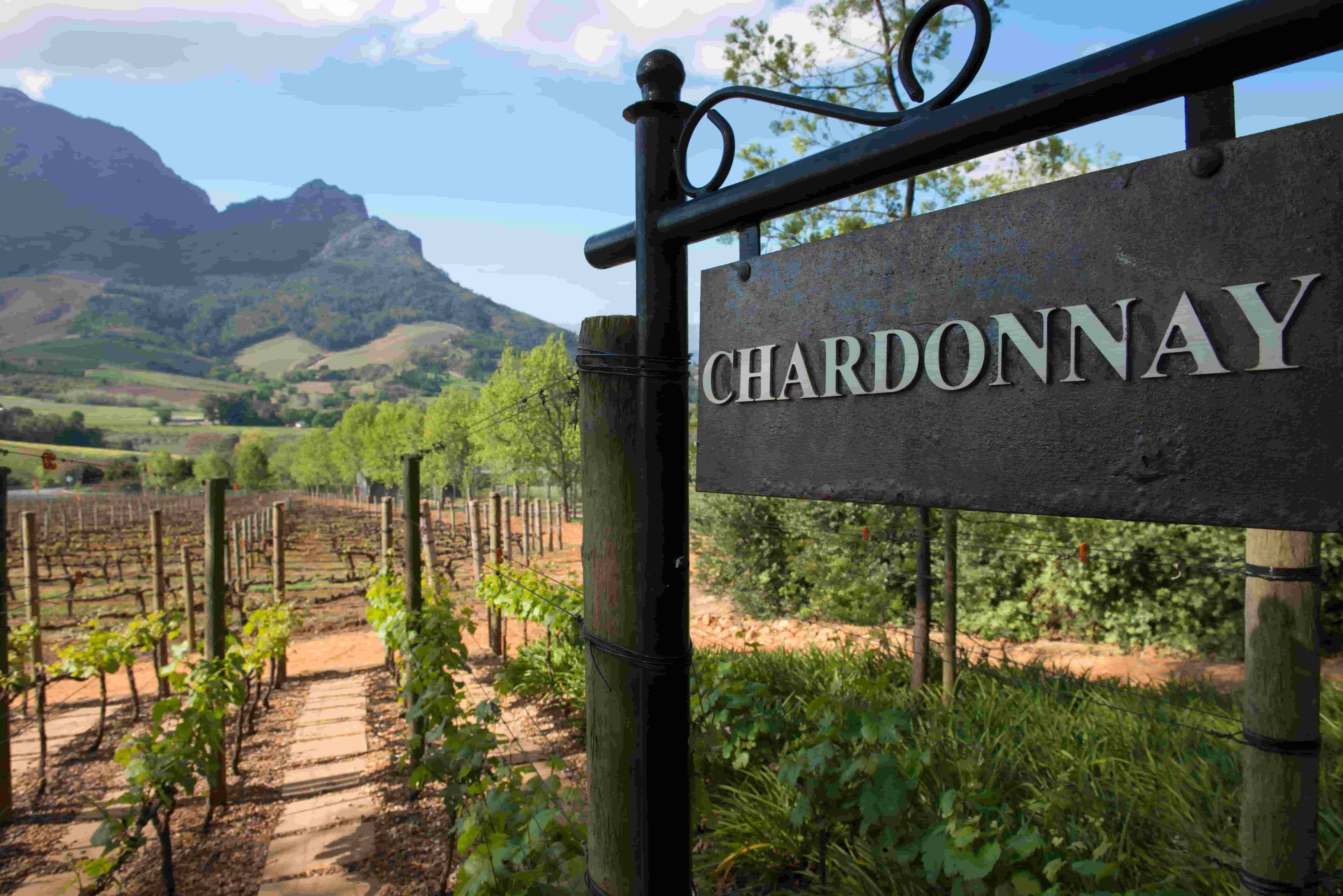
A guide to buying white wine | What should you know about Chardonnay?

Widely cultivated in France, Chardonnay has long been synonymous with complex white wine capable of ageing into subtle splendour. Originating in Burgundy, this Gallic celebrity is now ubiquitous worldwide, partly because it is relatively easy to grow. Indeed, Chardonnay will ripen without difficulty (unless the vintage is poor), excluding the coolest regions of the globe; making Chardonnay one of the most widely planted white grape varieties in the world.
This guide will focus on what to expect from the white grape, including where it is commonly produced, the tasting notes to look out for, and how to choose the best Chardonnay.
Click on a link to jump to that section:
What kind of wine is Chardonnay?
Chardonnay has been part of Burgundian wine culture since the Middle Ages. Nowadays, Chardonnay is produced across the globe, where the wine is unbelievably concentrated, structured, and profound.
The green-skinned grape variety is widely planted across the world, including Champagne, where it is one of the three varieties used in the classic Champagne blend. Champagne made from only Chardonnay is known as ‘Blanc de Blancs’. However, its most restrained and steely interpretation is arguably that of Chablis: often unoaked and bone-dry Chardonnay that delivers citrus fruit and aromas of gunflint and minerals.
Chardonnay remains one of the world’s best-known and popular styles, largely because it is so wonderfully versatile and malleable. The white grape produces high-quality unoaked and oaked wines, ranging from light and steely to positively voluptuous. It will happily take on whatever character the winemaker desires, and is a true chameleon. In most cases, the influence of oak will be detected on the bouquet and palate, including flavours of toast, vanilla and butter; producing a full-bodied Chardonnay. Unoaked Chardonnay is similar to the zesty styles of Pinot Gris or Sauvignon Blanc; producing citrus tastes and medium to high acidity.
Browse through our range of Chardonnay here.
Chardonnay by region
France

Burgundy
The ancestral home of Chardonnay, northern Burgundy’s vineyards of Chablis is a cool climate and Kimmeridgian limestone yield that produces the white grape at its most tense and elegant: flavours of minerals and stones fill your glass. Its vibrant acidity and lively structure make Chablis the premier choice when seafood is on the menu; Premier and Grand Cru wines will improve in bottle for ten years, gaining weight and complexity.
Many collectors regard Côte de Beaune whites as the gold standard, particularly if they’re from Corton-Charlemagne, Meursault, Chassagne-Montrachet and Puligny-Montrachet. Côte d’Or wines typically undergo oak ageing and malolactic fermentation to create complex and rich styles.
However, some very high-quality labels are also made in the Côte Chalonnaise and Mâconnais, located further south. The Pouilly-Fuissé district is known for producing superlative whites on limestone hills that define the southern reaches of the zone.
Browse through our range of Burgundy wines here.
Champagne
Although the grape is planted across the Champagne region, many of the best terroirs are situated in the Côte de Blancs subregion to the south of Epernay. On this east-facing slope, Chardonnay is grown on ancient chalk soils, used to add freshness and finesse to a blend or produced as a single-varietal style. Cramant, Avize and Le Mesnil are three villages with a universally respected pedigree.
Browse through our range of French wines here, or discover more about the wine regions in France here.
The USA
California
Few would deny that some of the world’s greatest Chardonnays are made on the US West Coast. Napa Valley, Sonoma County, Anderson Valley and Carneros have all proven their worth. Indeed, Chardonnay is the most planted white grape in Sonoma County, and the Russian River Valley AVA is one of the area’s coolest vineyards. This is one of California’s leading terroirs, where the best producers fashion open and expressive wines that will age into honeyed opulence.
However, thanks to the cooling Atlantic mists, acidity levels usually remain notably high so that the Russian River can offer structured wines that are seldom flabby.
Browse through our range of American Chardonnay here.
Australia
Yarra Valley
Chardonnay is clearly one of the Yarra Valley’s major strengths, producing fruit-driven whites with crisp acidity and undertones of vanilla (due to oak ageing). In 1987, Moet & Chandon established Chandon in this part of Victoria, producing high-quality fizz that relies heavily on Chardonnay cultivated in the valley’s cooler upper reaches.
Margaret River
Margaret River’s international reputation has been greatly enhanced by its award-winning Chardonnay. Pioneers like Cullen, Moss Wood and Leeuwin continue to make exemplary wines from the grape: concentrated and supremely elegant. Dry and warm summers, tempered by the onshore wind known as the Fremantle Doctor, are the secret to their success. Intense flavours include ripe stone fruits and melon.
Browse through our range of Australian wines here.
Chardonnay viticulture & winemaking
Chardonnay is grown worldwide, appreciated for its forgiving nature and splendid wine. Yet, the variety is highly versatile, and tends to bud and ripen just after Pinot Noir in the Côte de Beaune; however, spring frost can still be a problem in certain years. It is also susceptible to coulure – a failure of the grapes to develop after flowering. This is often triggered by cold and wet weather during late spring. There is also the risk of over maturity and/or overproduction: overcropped vines will yield berries that lack sufficient acidity and are liable to peak quickly.
But, with judicious pruning and care, Chardonnay vines deliver compact cylindrical clusters of grapes packed full of flavour. It thrives on the calcareous soils of the Côte de Beaune, particularly the hallowed slopes of Puligny-Montrachet and Meursault.
Unoaked Chardonnay
Some winemakers elect to ferment Chardonnay in low temperatures in stainless steel, producing very fruity and fresh wine. Malolactic fermentation (the conversion of harsh malic acid to softer lactic acid) adds to the complexity of Chardonnay; it will be encouraged in cool-climate regions and generally avoided in hotter areas, where natural acidity can be low. This process will also add buttery and yoghurt notes to the wine, which will be filtered and bottled as an unoaked style.
Oaked Chardonnay
However, many of the world’s top Chardonnay wines are vinified and aged in an oak barrel. Oak impacts the taste and style of Chardonnay, influenced by the barrel’s size, type, toast level, and time of ageing. Lees stirring may also be used to enhance mouthfeel : this technique involves literally mixing up the lees (dead yeast cells) into the wine periodically and adds a creamy complexity to the wine. This process can be used for both oaked and unoaked styles
How do you choose a Chardonnay wine?
Chardonnay’s varietal character is expressed in many forms: minerally, unoaked Chablis; Blanc de Blancs Champagne, and as a full-bodied, creamy white wine in southern Burgundy. The richest and ripest examples inevitably emanate from the New World, albeit many Australian vintners have swapped buttery concentration for steely precision.
Generally, a Californian Chardonnay offers concentrated fruit and expressive aromatics, and Margaret River is renowned for producing structured white wines from Burgundy . Chardonnay should be served chilled (9°C – unoaked to 12°C – oaked), either 2 hours in the fridge or 30-40 minutes in an ice bath. Chablis and Blanc de Blancs Champagne are the perfect partners for shellfish; an oaked Chardonnay – Burgundian or New World – is exquisite alongside dover sole, turbot, roast veal and sweetbreads.
At Jeroboams, we stock a variety of Chardonnay, including from popular regions Burgundy, South Australia, and California.
Browse through our range of Chardonnay wines here, or contact us to speak to one of our experts.
Frequently asked questions
What are Old World and New World regions?
The phrase ‘Old World’ refers to long-established regions in Europe – Burgundy, for example. New World is an umbrella term for wines made in Australia, New Zealand, North America, South America and South Africa.
How do you know if Chardonnay is oaked or unoaked?
Although this is seldom mentioned on the label, the provenance of the wine (at least in Europe) should clue you in. As a rule, Chablis tends to be unoaked; super-premium Chardonnays from other parts of Burgundy and the New World will usually showcase some oaky flavours.




